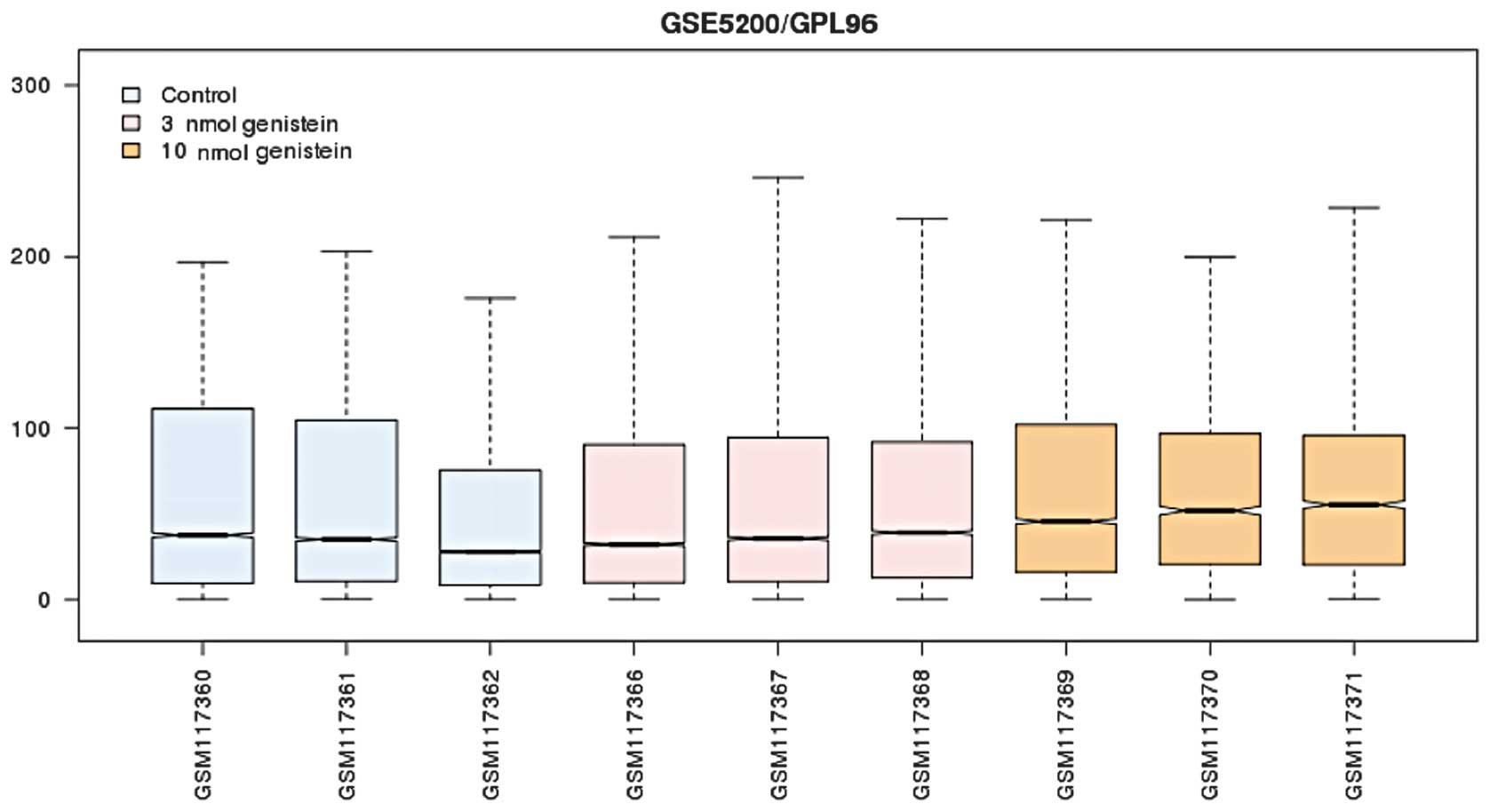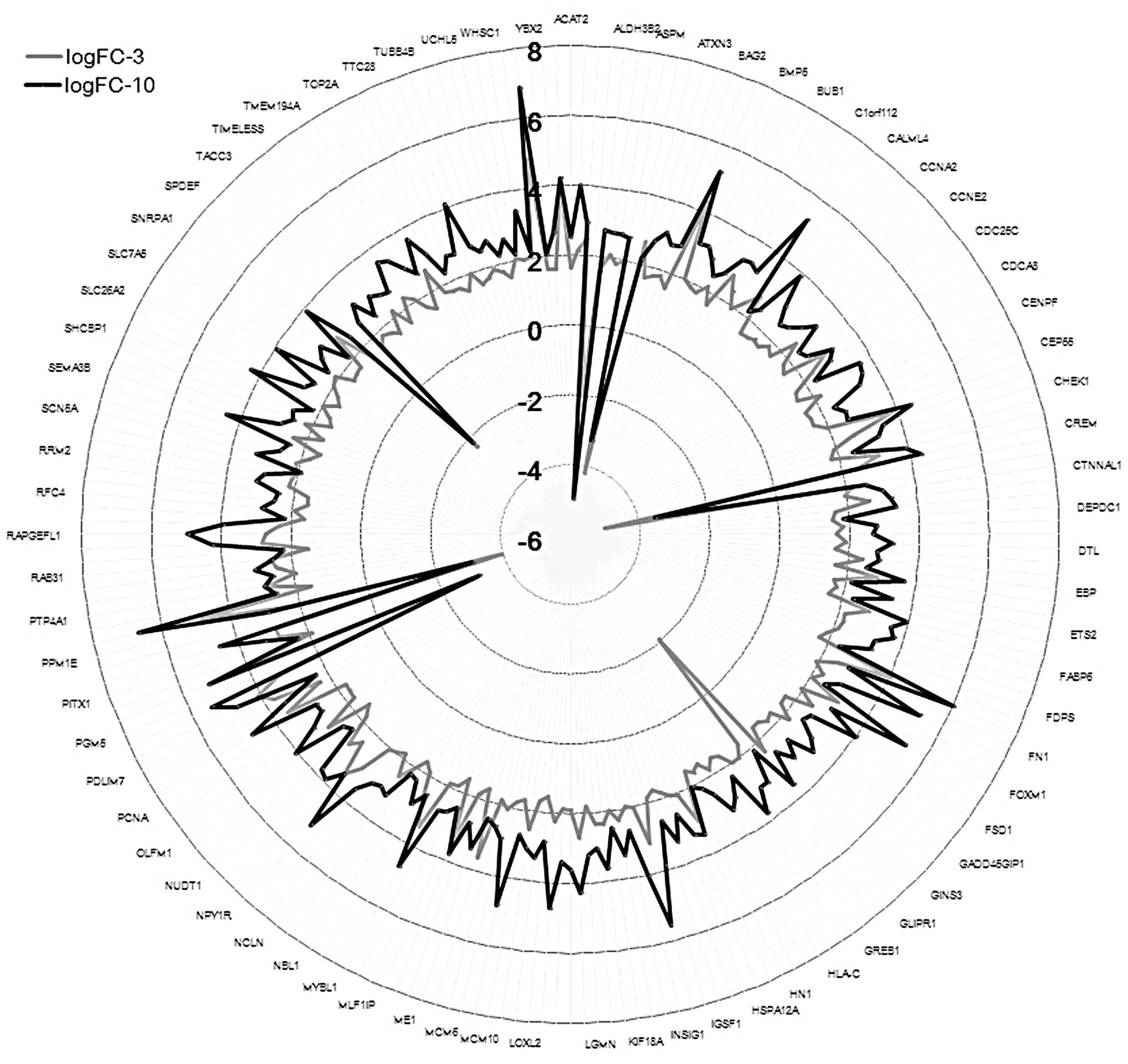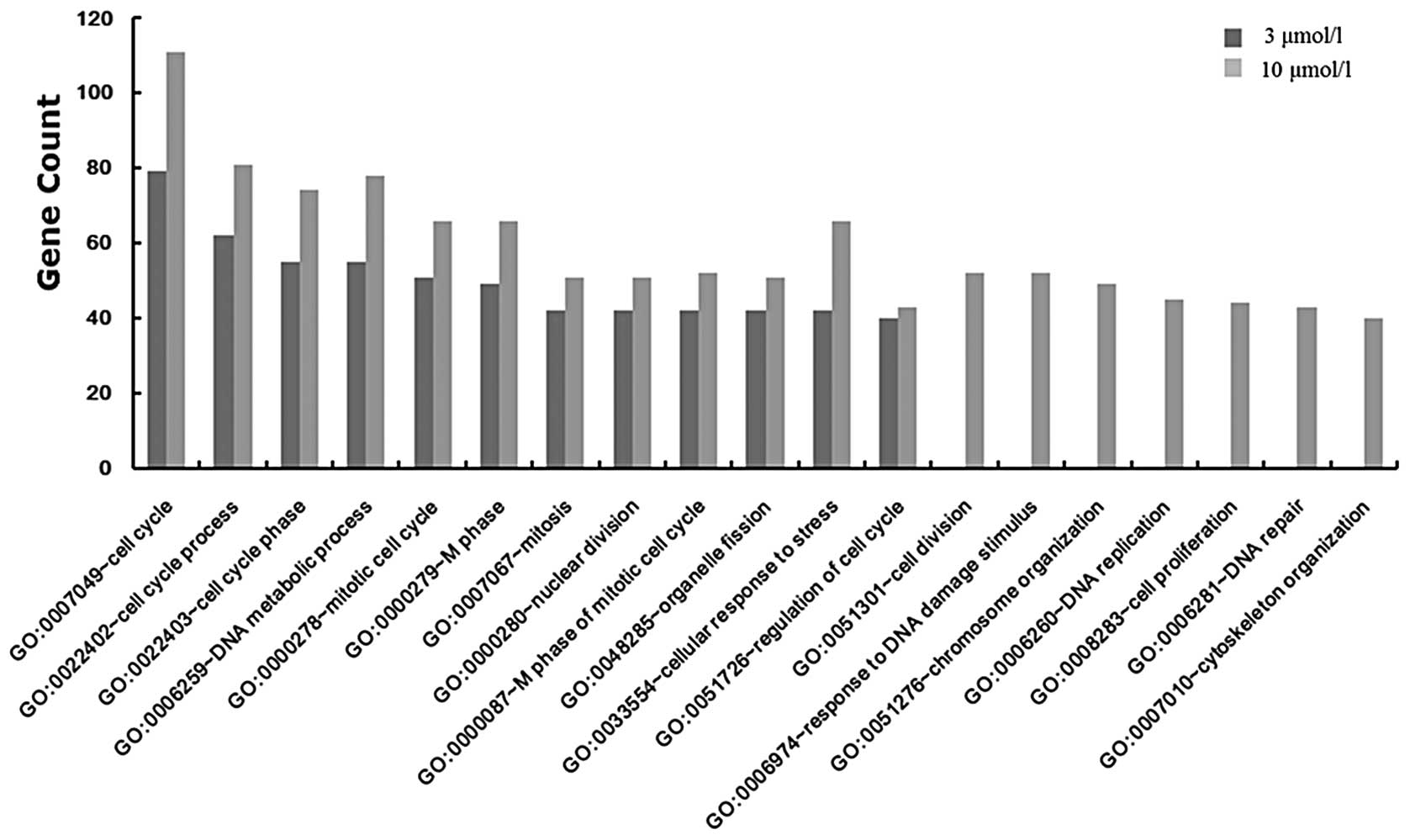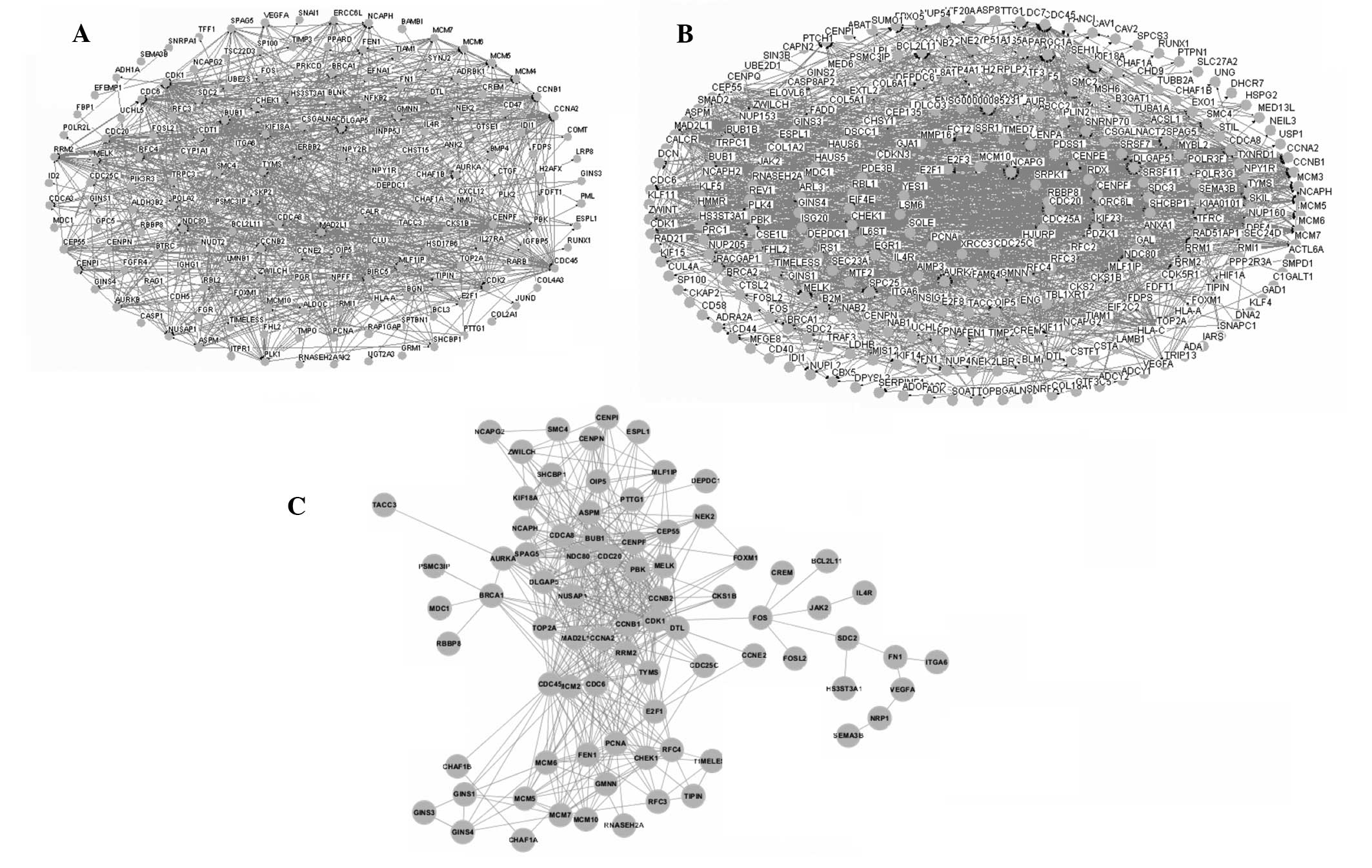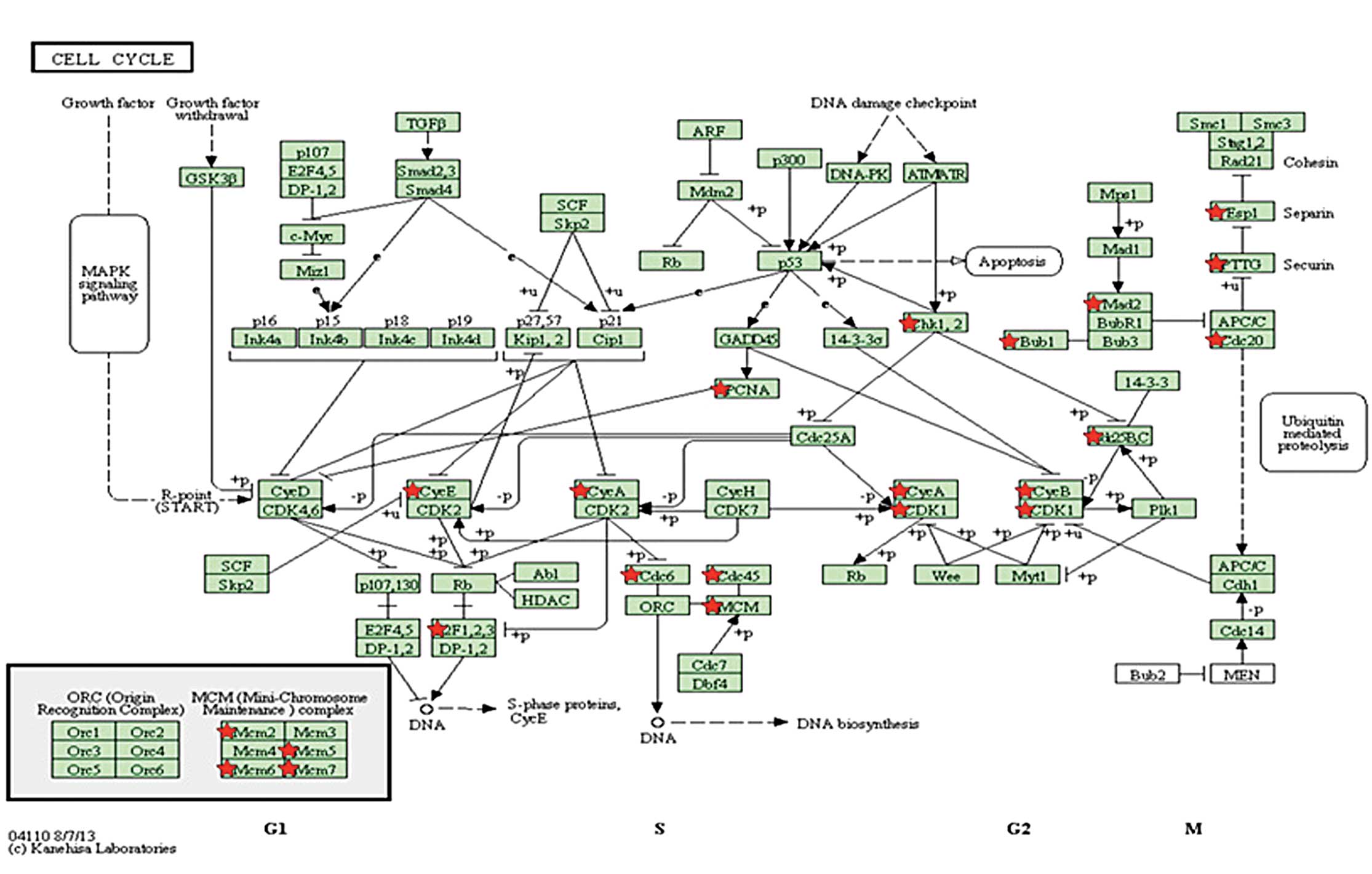|
1
|
Jemal A, Siegel R, Xu J and Ward E: Cancer
statistics, 2010. CA Cancer J Clin. 60:277–300. 2010. View Article : Google Scholar : PubMed/NCBI
|
|
2
|
Brenner H: Long-term survival rates of
cancer patients achieved by the end of the 20th century: a period
analysis. Lancet. 360:1131–1135. 2002. View Article : Google Scholar : PubMed/NCBI
|
|
3
|
Goldhirsch A, Glick JH, Gelber RD, Coates
AS and Senn HJ: Meeting highlights: International consensus panel
on the treatment of primary breast cancer. Seventh international
conference on adjuvant therapy of primary breast cancer. J Clin
Oncol. 19:3817–3827. 2001.PubMed/NCBI
|
|
4
|
Nathanson KL, Wooster R and Weber BL:
Breast cancer genetics: what we know and what we need. Nat Med.
7:552–556. 2001. View
Article : Google Scholar : PubMed/NCBI
|
|
5
|
Rahman N and Stratton MR: The genetics of
breast cancer susceptibility. Annu Rev Genet. 32:95–121. 1998.
View Article : Google Scholar
|
|
6
|
King MC, Marks JH and Mandell JB; New York
Breast Cancer Study Group. Breast and ovarian cancer risks due to
inherited mutations in BRCA1 and BRCA2. Science. 302:643–646. 2003.
View Article : Google Scholar : PubMed/NCBI
|
|
7
|
Dixon RA and Ferreira D: Genistein.
Phytochemistry. 60:205–211. 2002. View Article : Google Scholar : PubMed/NCBI
|
|
8
|
Marini H, Minutoli L, Polito F, et al:
Effects of the phytoestrogen genistein on bone metabolism in
osteopenic postmenopausal women: a randomized trial. Ann Intern
Med. 146:839–847. 2007. View Article : Google Scholar : PubMed/NCBI
|
|
9
|
Fritz WA, Coward L, Wang J and
Lamartiniere CA: Dietary genistein: perinatal mammary cancer
prevention, bioavailability and toxicity testing in the rat.
Carcinogenesis. 19:2151–2158. 1998. View Article : Google Scholar
|
|
10
|
Lamartiniere CA: Protection against breast
cancer with genistein: a component of soy. Am J Clin Nutr.
71(Suppl): 1705S–1709S. 2000.PubMed/NCBI
|
|
11
|
Hsieh CY, Santell RC, Haslam SZ and
Helferich WG: Estrogenic effects of genistein on the growth of
estrogen receptor-positive human breast cancer (MCF-7) cells in
vitro and in vivo. Cancer Res. 58:3833–3838. 1998.PubMed/NCBI
|
|
12
|
Messina MJ and Loprinzi CL: Soy for breast
cancer survivors: a critical review of the literature. J Nutr.
131(Suppl): 3095S–3108S. 2001.PubMed/NCBI
|
|
13
|
Ju YH, Allred CD, Allred KF, Karko KL,
Doerge DR and Helferich WG: Physiological concentrations of dietary
genistein dose-dependently stimulate growth of estrogen-dependent
human breast cancer (MCF-7) tumors implanted in athymic nude mice.
J Nutr. 131:2957–2962. 2001.PubMed/NCBI
|
|
14
|
Shioda T, Chesnes J, Coser KR, et al:
Importance of dosage standardization for interpreting
transcriptomal signature profiles: evidence from studies of
xenoestrogens. Proc Natl Acad Sci USA. 103:12033–12038. 2006.
View Article : Google Scholar : PubMed/NCBI
|
|
15
|
Fujita A, Sato J, de Rodrigues LO,
Ferreira CE and Sogayar MC: Evaluating different methods of
microarray data normalization. BMC Bioinformatics. 7:4692006.
View Article : Google Scholar : PubMed/NCBI
|
|
16
|
Troyanskaya O, Cantor M, Sherlock G, et
al: Missing value estimation methods for DNA microarrays.
Bioinformatics. 17:520–525. 2001. View Article : Google Scholar : PubMed/NCBI
|
|
17
|
Smyth GK: Limma: linear models for
microarray data. Bioinformatics and Computational Biology Solutions
Using R and Bioconductor. Gentleman R, Carey V, Dudoit S, Irizarry
R and Huber W: Springer; New York, NY: pp. 397–420. 2005,
View Article : Google Scholar
|
|
18
|
Tatusov RL, Natale DA, Garkavtsev IV, et
al: The COG database: new developments in phylogenetic
classification of proteins from complete genomes. Nucleic Acids
Res. 29:22–28. 2001. View Article : Google Scholar :
|
|
19
|
Altschul SF, Gish W, Miller W, Myers EW
and Lipman DJ: Basic local alignment search tool. J Mol Biol.
215:403–410. 1990. View Article : Google Scholar : PubMed/NCBI
|
|
20
|
Giot L, Bader JS, Brouwer C, et al: A
protein interaction map of Drosophila melanogaster. Science.
302:1727–1736. 2003. View Article : Google Scholar : PubMed/NCBI
|
|
21
|
Deng M, Zhao JY, Ju XD, Tu PF, Jiang Y and
Li ZB: Protective effect of tubuloside B on TNFalpha-induced
apoptosis in neuronal cells. Acta Pharmacol Sin. 25:1276–1284.
2004.PubMed/NCBI
|
|
22
|
Breitkreutz B-J, Stark C and Tyers M:
Osprey: a network visualization system. Genome Biol. 4:R222003.
View Article : Google Scholar : PubMed/NCBI
|
|
23
|
Willis RC and Hogue CW: Searching,
viewing, and visualizing data in the Biomolecular Interaction
Network Database (BIND). Curr Protoc Bioinformatics. Chapter 8(Unit
8): 92006.
|
|
24
|
Breitkreutz BJ, Stark C and Tyers M: The
GRID: the General Repository for Interaction Datasets. Genome Biol.
4:R232003. View Article : Google Scholar : PubMed/NCBI
|
|
25
|
Nam D and Kim SY: Gene-set approach for
expression pattern analysis. Brief Bioinform. 9:189–197. 2008.
View Article : Google Scholar : PubMed/NCBI
|
|
26
|
Huang da W, Sherman BT and Lempicki RA:
Systematic and integrative analysis of large gene lists using DAVID
bioinformatics resources. Nat Protoc. 4:44–57. 2009. View Article : Google Scholar : PubMed/NCBI
|
|
27
|
Zhang B, Kirov S and Snoddy J: WebGestalt:
an integrated system for exploring gene sets in various biological
contexts. Nucleic Acids Res. 33:W741–W748. 2005. View Article : Google Scholar : PubMed/NCBI
|
|
28
|
Duncan D, Prodduturi N and Zhang B:
WebGestalt2: an updated and expanded version of the Web-based Gene
Set Analysis Toolkit. BMC Bioinformatics. 11:P102010. View Article : Google Scholar
|
|
29
|
Coles C, Condie A, Chetty U, Steel CM,
Evans HJ and Prosser J: p53 mutations in breast cancer. Cancer Res.
52:5291–5298. 1992.PubMed/NCBI
|
|
30
|
Giancotti V: Breast cancer markers. Cancer
Lett. 243:145–159. 2006. View Article : Google Scholar : PubMed/NCBI
|
|
31
|
Ganz PA: Breast cancer, menopause, and
long-term survivorship: critical issues for the 21st century. Am J
Med. 118:136–141. 2005. View Article : Google Scholar
|
|
32
|
Yu H: Cdc20: A WD40 activator for a cell
cycle degradation machine. Mol Cell. 27:3–16. 2007. View Article : Google Scholar : PubMed/NCBI
|
|
33
|
Yuan B, Xu Y, Woo JH, et al: Increased
expression of mitotic checkpoint genes in breast cancer cells with
chromosomal instability. Clin Cancer Res. 12:405–410. 2006.
View Article : Google Scholar : PubMed/NCBI
|
|
34
|
Agarwal R, Gonzalez-Angulo AM, Myhre S, et
al: Integrative analysis of cyclin protein levels identifies cyclin
b1 as a classifier and predictor of outcomes in breast cancer. Clin
Cancer Res. 15:3654–3662. 2009. View Article : Google Scholar : PubMed/NCBI
|
|
35
|
Gonzalez MA, Pinder SE, Callagy G, et al:
Minichromosome maintenance protein 2 is a strong independent
prognostic marker in breast cancer. J Clin Oncol. 21:4306–4313.
2003. View Article : Google Scholar : PubMed/NCBI
|
|
36
|
Yang J, Ramnath N, Moysich KB, et al:
Prognostic significance of MCM2, Ki-67 and gelsolin in non-small
cell lung cancer. BMC Cancer. 6:2032006. View Article : Google Scholar : PubMed/NCBI
|
|
37
|
Sotiriou C, Neo SY, McShane LM, et al:
Breast cancer classification and prognosis based on gene expression
profiles from a population-based study. Proc Natl Acad Sci USA.
100:10393–10398. 2003. View Article : Google Scholar : PubMed/NCBI
|
|
38
|
Cappelletti V, Fioravanti L, Miodini P and
Di Fronzo G: Genistein blocks breast cancer cells in the G(2)M
phase of the cell cycle. J Cell Biochem. 79:594–600. 2000.
View Article : Google Scholar : PubMed/NCBI
|
|
39
|
Fioravanti L, Cappelletti V, Miodini P,
Ronchi E, Brivio M and Di Fronzo G: Genistein in the control of
breast cancer cell growth: insights into the mechanism of action in
vitro. Cancer Lett. 130:143–152. 1998. View Article : Google Scholar : PubMed/NCBI
|
|
40
|
Li Y, Upadhyay S, Bhuiyan M and Sarkar FH:
Induction of apoptosis in breast cancer cells MDA-MB-231 by
genistein. Oncogene. 18:3166–3172. 1999. View Article : Google Scholar : PubMed/NCBI
|
|
41
|
Salomons GS, Brady HJ, Verwijs-Janssen M,
et al: The Bax alpha:Bcl-2 ratio modulates the response to
dexamethasone in leukaemic cells and is highly variable in
childhood acute leukaemia. Int J Cancer. 71:959–965. 1997.
View Article : Google Scholar : PubMed/NCBI
|
|
42
|
Ren C, Li L, Yang G, et al: RTVP-1, a
tumor suppressor inactivated by methylation in prostate cancer.
Cancer Res. 64:969–976. 2004. View Article : Google Scholar : PubMed/NCBI
|



